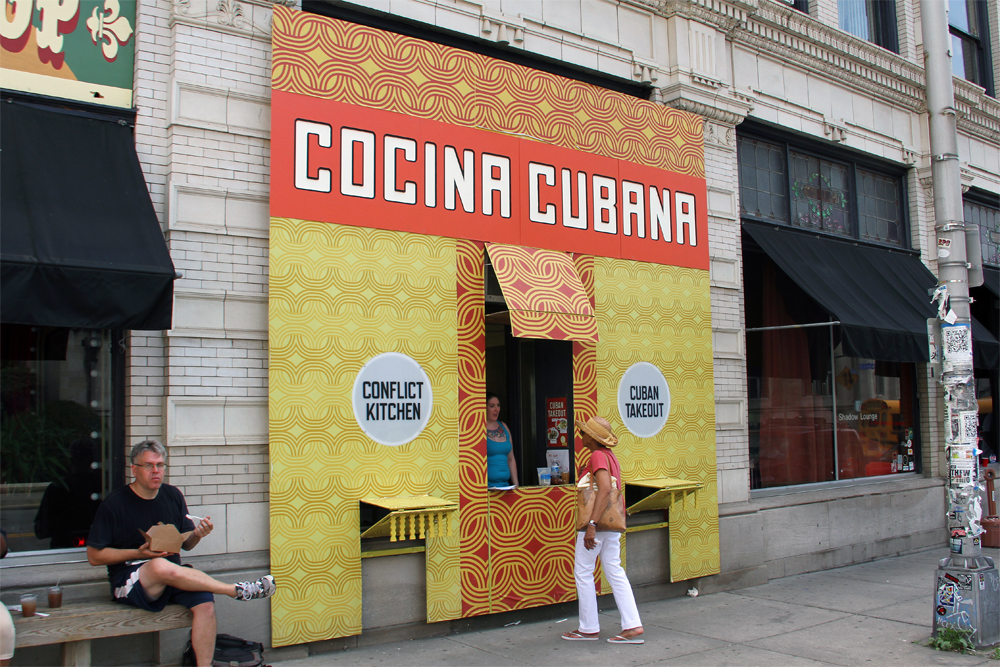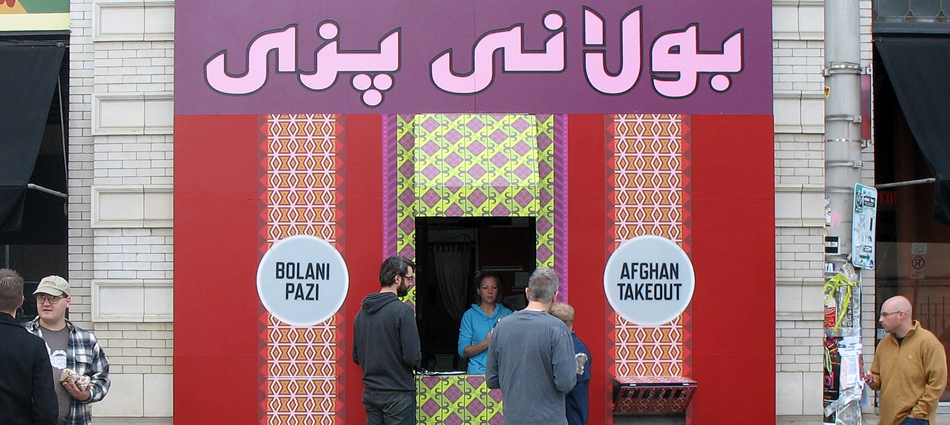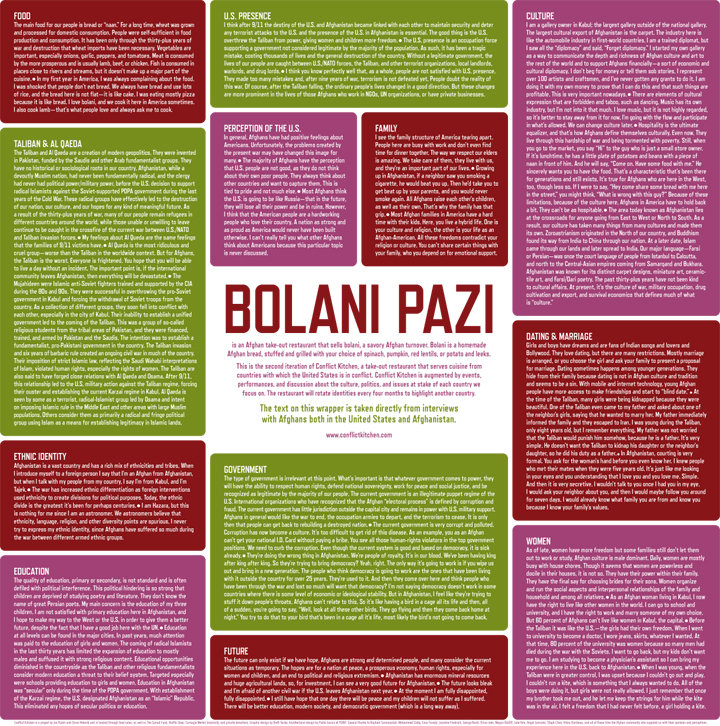One of my favorite examples of culinary diplomacy (or more precisely: public culinary diplomacy) is the Conflict Kitchen, a take-out restaurant in Pittsburgh. The catch here is that Conflict Kitchen only serves food from countries with which the United States is in conflict. So far they have had 4 iterations: Afghan, Iranian, Venezuelan, and they are currently serving Cuban food.

Started by a group of artists at Carnegie Mellon University, Conflict Kitchen is at its base a project in which artists Jon Rubin and Dawn Weleski experiment with the agency of their audience. To them, art isn’t something that you look at; instead you go up to it, order a sandwich, learn about another culture, and enjoy some delicious food.

This is a great concept. It combines a few aspects of culinary diplomacy that make it such a powerful tool: soft power, contact hypothesis, and in a way, nation-branding. Chef Mark Tafoya has written about the soft power of food:
“When we try a new dish that comes from another land, we have a visceral experience of foreignness brought into our bodies, which begins the process of familiarization which can lead to great understanding of our shared tastes and values.”
Food’s ability to attract instead of force people to familiarize themselves with a foreign culture makes it invaluable for cultural exchange. Furthermore, inserting Gordon Allport’s contact hypothesis into the equation, we can see that contact among members of different groups will reduce hostility and promote more positive behavior in inter-group meetings. Although there aren’t necessarily people present from Iran, Afghanistan, Venezuela, or Cuba at all times, the artists have worked with those groups to create strong labeling and messaging, in order to teach Americans about the Other:

Finally, most Americans’ awareness of the Other, take Afghanistan for example, is limited by what we hear in the media. Beyond war, we see poppies, burqas, and warlords, a highly parochial and politicized view. Through initiatives like the Conflict Kitchen, a nation’s image can be re-branded to allow for a more balanced understanding. This helps us perceive the Other differently, so that next time we hear a one-sided story in the news, we can start to have some perspective on the conflict and to think for ourselves about it.
In another post, I will discuss a special event held by Conflict Kitchen in which diners in Pittsburgh and diners in Tehran shared the other’s cuisine, sitting at tables linked by Skype. True culinary diplomacy.
One Response
Embassy Chef Challenge | Culinary Diplomacy
[…] consider including some of their national cuisine to welcome visitors. I’ve discussed other tools before, and scholars like Mary Jo Pham and Paul Rockower have written great articles about the […]